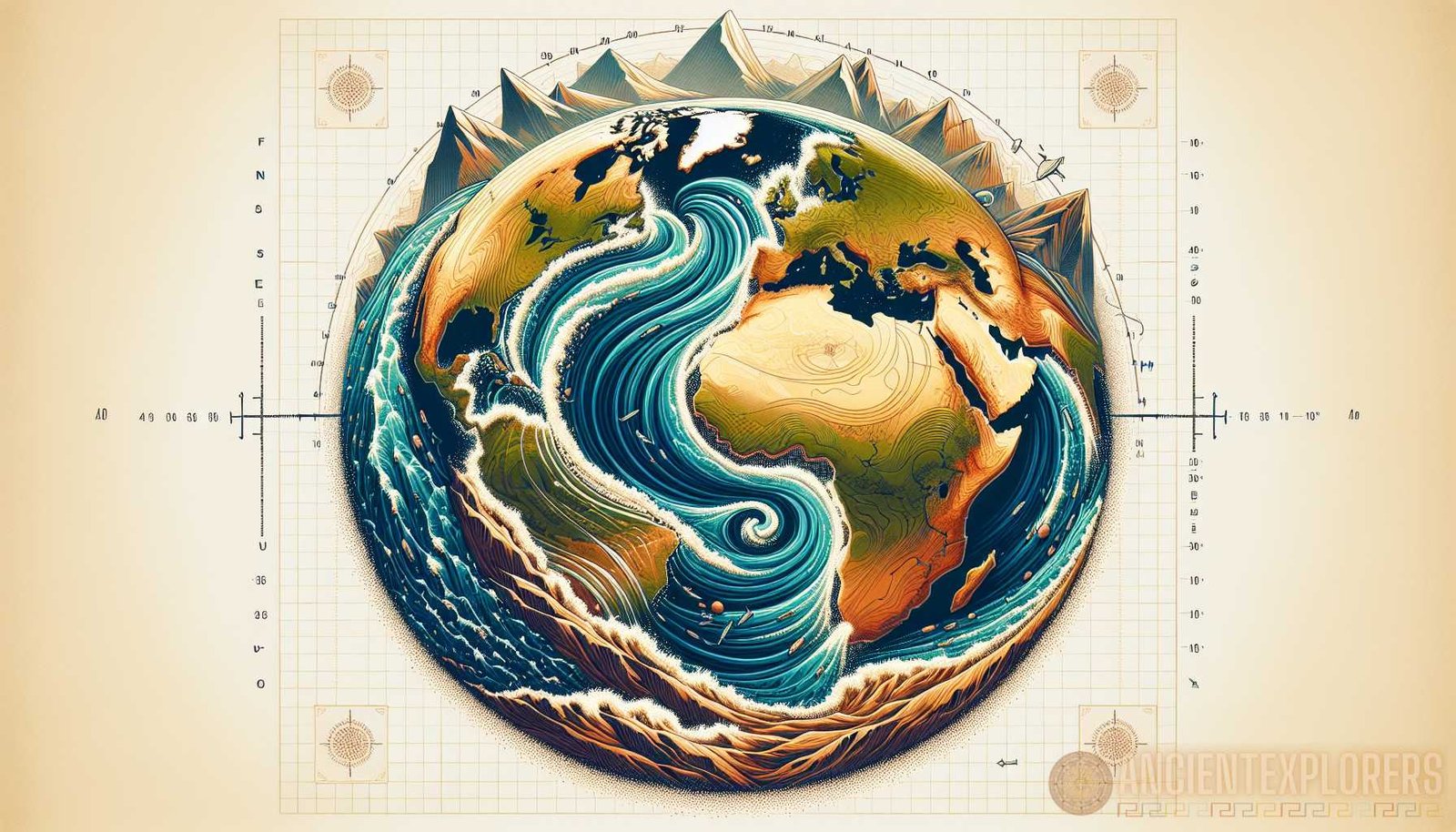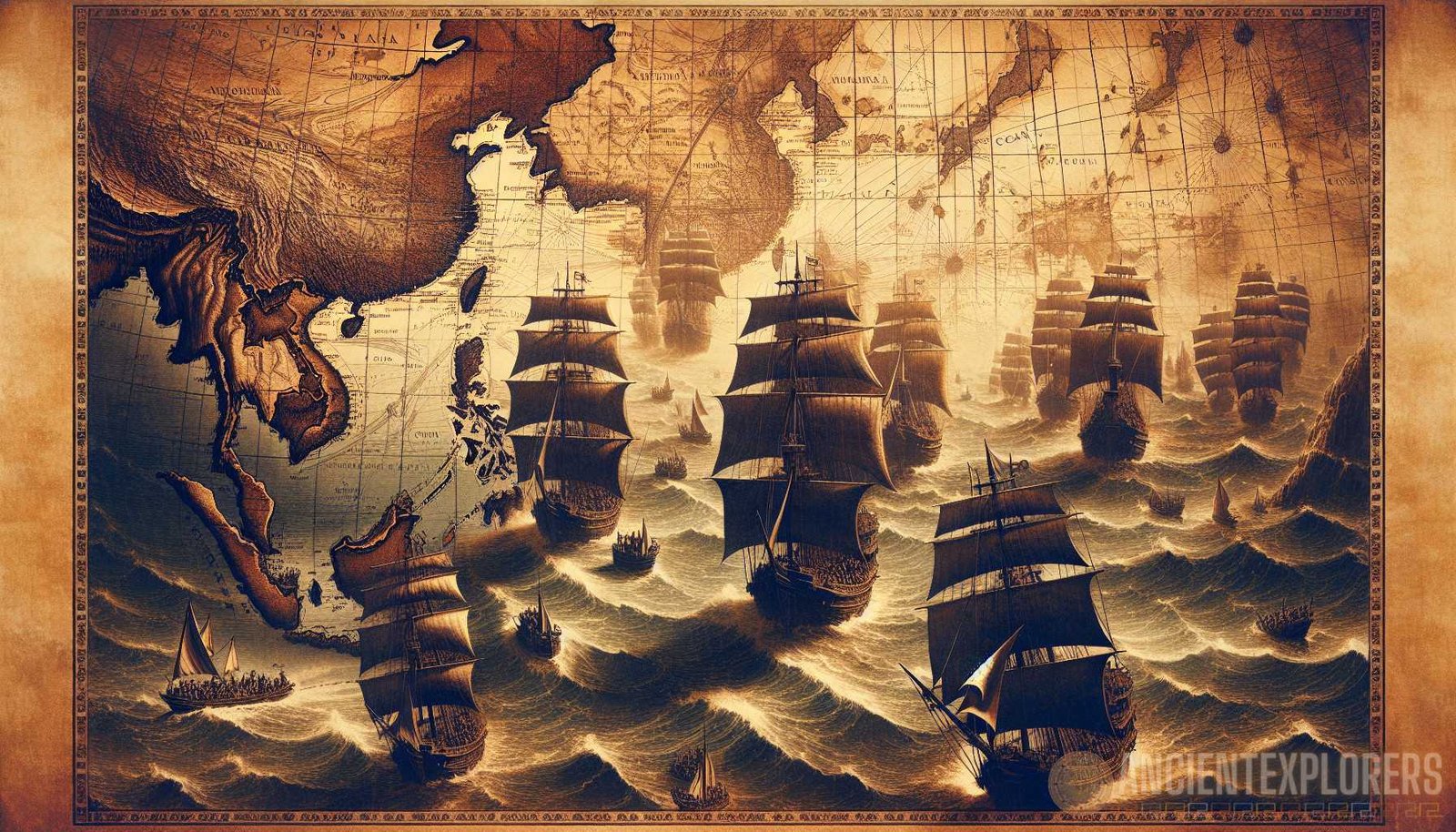Aquatic Dynamos: Unraveling the Hidden Forces Behind Ancient Civilizations
Ancient civilizations have always fascinated us with their incredible accomplishments and mysteries. From the pyramids of Egypt to the Mayan ruins in Central America, these cultures have left behind a legacy that continues to capture our imagination. While many factors contributed to the rise and fall of these civilizations, one element that is often overlooked is the role of ancient currents. In this guide, we will explore the hidden forces behind ancient civilizations, specifically focusing on the influence of ancient currents on their development and prosperity.
The Power of Ancient Currents
Ancient currents, also known as oceanic currents, are the continuous and directed movements of ocean water. These currents are driven by a variety of factors, including wind patterns, temperature, salinity, and the shape of the ocean floor. Over thousands of years, these currents have played a crucial role in shaping the Earth’s climate, distributing heat around the globe, and even influencing the migration patterns of marine life.
But what does this have to do with ancient civilizations? Well, it turns out that these currents also had a profound impact on the development and prosperity of many ancient cultures. In fact, some researchers believe that ancient currents were key to the survival of these civilizations.
The Nile River: Egypt’s Lifeline
When we think of ancient civilizations, one of the first that comes to mind is Egypt. The pyramids, the Sphinx, and the pharaohs all evoke images of a mighty and prosperous civilization. But what made Egypt so successful?
One crucial factor was the Nile River. The Nile, one of the world’s longest rivers, played a crucial role in the development of ancient Egypt. It provided the Egyptians with a reliable source of water, fertile soil for agriculture, and a means of transportation. But what many people don’t realize is that the Nile’s flow is influenced by ancient currents.

The Nile flows from south to north, which is unusual for a river. This is due to the influence of the North Atlantic Drift, a warm water current that flows along the west coast of Africa. The North Atlantic Drift pushes the water in the eastern Atlantic Ocean westward, which causes the water in the Nile Delta to flow northwards. This unique pattern allowed the Egyptians to harness the power of the river and create a thriving civilization.
To learn more about the influence of ancient currents on the Nile River and its impact on ancient Egyptian civilization, check out this comprehensive guide.
The Mysterious Mayans: Masters of Water Management
Another ancient civilization that showcased an exceptional understanding of ancient currents was the Mayans. The Mayans, who inhabited the region that is now Mexico and Central America, are known for their advanced astronomical knowledge, complex calendar system, and impressive architectural achievements.
But what often goes unnoticed is their mastery of water management. The Mayans built elaborate systems of canals and reservoirs to control and distribute water throughout their cities. This allowed them to thrive in regions with unpredictable rainfall patterns and limited freshwater sources. But how did they know where to build these canal systems?
It turns out that the Mayans had an intricate understanding of the Yucatan Current, a warm water current that flows along the coast of the Yucatan Peninsula. By observing the patterns of this current, the Mayans were able to determine the best locations for their canals and reservoirs. They also made use of natural sinkholes called cenotes, which were created by the collapse of limestone bedrock and provided a source of freshwater.
If you want to delve deeper into the enigmatic Mayan Empire and how they harnessed the power of ancient currents, read this fascinating article on Ancient Explorers.
The Trade Routes of the Ancient World
Ancient currents didn’t just impact individual civilizations, they also played a pivotal role in shaping the trade routes of the ancient world. The interaction between these currents and prevailing winds not only influenced the speed and direction of sailing ships but also determined which regions were easily accessible by sea.

One example of this is the Silk Road, an ancient network of trade routes that connected the East and the West. While much of the Silk Road was overland, the maritime Silk Road, which linked China with the Mediterranean, was heavily influenced by ancient currents.
The Indian Ocean Monsoon, a system of alternating winds that blows across the Indian Ocean, facilitated trade between China, India, and the Middle East. Traders would time their voyages to take advantage of these winds, which enabled faster and more efficient travel. The Spice Islands, located in the Indonesian Archipelago, were also strategically positioned along these ancient currents, making them a hub of trade and commerce.
Unlocking the Secret Knowledge
Studying ancient currents and their influence on ancient civilizations is not just a matter of historical curiosity. It can also provide us with valuable insights into how these civilizations adapted to their environments and the resource management strategies they employed.
Furthermore, understanding ancient currents can also help us predict and mitigate the impacts of climate change on coastal regions. As sea levels rise and storm patterns become more unpredictable, the knowledge gained from ancient civilizations could prove invaluable in developing resilient and sustainable coastal communities.
Conclusion
The influence of ancient currents on ancient civilizations cannot be underestimated. From the Nile Delta to the Silk Road, these currents shaped the destiny of many cultures and facilitated the exchange of ideas, goods, and technology.
By unraveling the hidden forces behind ancient civilizations, we gain a deeper understanding of the challenges they faced, the innovative solutions they developed, and the legacies they left behind. Ancient currents were the lifeblood of these civilizations, providing them with vital resources, trade routes, and the ability to adapt to their environment.
To explore more about the impact of ancient currents on ancient civilizations, visit the articles “Unlocking Ancient Civilizations: A Comprehensive Guide on Water’s Pivotal Role” and “Unraveling the Enigmatic Mayan Empire: Deciphering their Triumphs and Fall” on Ancient Explorers.



